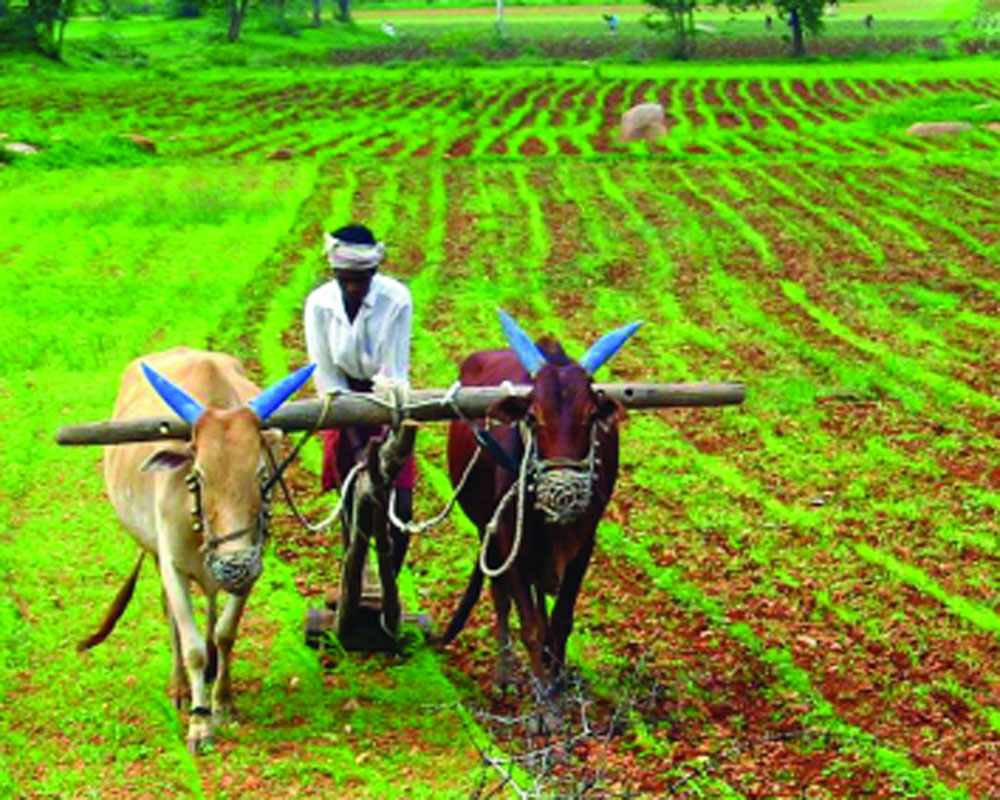The government and research institutions' initiatives need to be complemented with efforts by civil society to address social barriers and information gaps
Crop residue management is a major issue in India's agriculture sector, which is related to not just farm economy and farmers' welfare but also to environmental quality and health of the people.
The Nature Conservancy Centre (TNC), along with several partners, undertook a systematic review of ten available options for managing rice crop residue, which was published in Science in 2019. The study identified Happy Seeder (HS) — a conservation agriculture technology — as the most suitable alternative for farmers.
HS cuts and lifts straw, sows wheat and returns the rice straw onto the sown areas as mulch. In the short term, it reduces the number of operations and inputs needed, saving time and money for the farmers, and reducing air pollution. In the long term, HS improves soil quality, increases crop yield, and reduces the environmental footprint of farming. TNC and its partners (Borlaug Institute for South Asia and International Maize and Wheat Improvement Center), with support from the Tata Trusts, are implementing project HARIT in Punjab and Haryana. The project has shown that HS could increase farmers' profit by 15 per cent, while providing many other long-term benefits. However, farmers need support to transition to such technologies.
The central and state governments have undertaken several initiatives to address the crop residue management issue. The central government has formulated a National Policy for Management of Crop Residue, which promotes in-situ management through the direct incorporation of crop residue into soils as mulch. It has released around Rs 2,500 crores between 2018-19 and 2021-22 (up to June 2021) to support Punjab, Haryana, UP and NCT of Delhi for subsidising CRM machines. The farmers of these states have availed subsidies on CRM machines (including HS) — 50 per cent for individual farmers and 80 per cent for cooperatives and farmers' groups through custom hiring centres. Nearly 1,15,000 machines have been subsidized in Punjab and Haryana alone, and approximately 12,500 and 3,000 CHCs have been set up in both the states, respectively.
However, there is a need for innovative and targeted communication to create awareness about the advantages of HS. First, the farmers need to be convinced that using HS will enhance their net profit. Second, farmers need to be technically equipped to adopt the recommended practices. They need to be trained on the machine operation and maintenance as well changes required in agronomical practices. Third, appropriate monitoring mechanisms need to be set up to effectively match the demand and supply of CRM machines in different regions. Fourth, high intensity burn areas as well as learning sites need to be identified (where there is substantial reduction in residue burning over a period of time) using remote sensing and geographic information system (GIS) technologies and this information needs to be shared with CRM stakeholders. Fifth, CHCs need to be made fully functional as viable rental business units, capable of delivering all CRM services to the farmers in a timely and cost-effective manner, including availability of equipment and operators in the peak season as well as proper maintenance of machines for optimal results. Sixth, primary agricultural cooperative societies (PACS) need to be supported to improve their utilization of CRM machines. Finally, performance-based incentive mechanisms need to be developed, considering factors such as number of acres covered per CRM machine.
The government and other research institutions' initiatives need to be complemented with efforts by civil society to address social barriers and information gaps, so that adoption and use of HS could be accelerated. The HARIT and the Tata Trusts' Reviving Green Revolution initiative to support farmers in selected villages across 16 districts of Punjab and Haryana are good models to build on, where farmers are equipped with appropriate information and skills to adopt HS machines and align their agricultural practices for optimal results.
With help from the government, scientists and civil society organizations, farmers of northwest India can rapidly adopt technologies that can benefit them and the larger society. It is high time to initiate discussions and collaborations among key stakeholders to address the CRM issue. Any investment in CRM is likely to yield several fold returns that include better returns for the famers, improved soil health as well health of the communities. Remunerative crop diversification initiatives with proper procurement and market linkages need to be launched to rationalize the area under rice and other crops.
(Saigal is Director of Programs and Singh, Project Head — Crop Residue Management, TNC (The Nature Conservancy Centre. The views expressed are personal.)


























